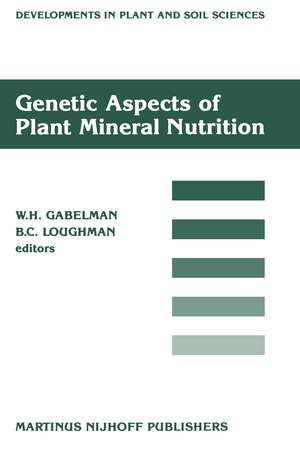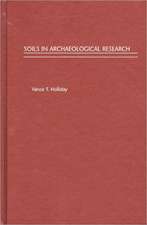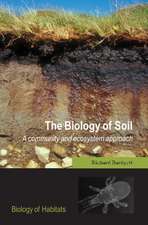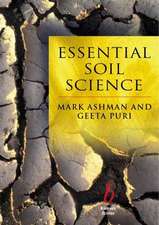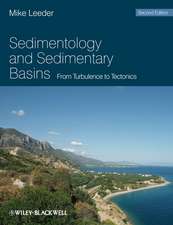Genetic Aspects of Plant Mineral Nutrition: Proceedings of the Second International Symposium on Genetic Aspects of Plant Mineral Nutrition, organized by the University of Wisconsin, Madison, June 16–20, 1985: Developments in Plant and Soil Sciences, cartea 27
Editat de W.H. Gabelman, B.C. Loughmanen Limba Engleză Paperback – 22 oct 2011
Din seria Developments in Plant and Soil Sciences
- 18%
 Preț: 1225.94 lei
Preț: 1225.94 lei -
 Preț: 391.79 lei
Preț: 391.79 lei - 18%
 Preț: 1225.94 lei
Preț: 1225.94 lei - 18%
 Preț: 1228.29 lei
Preț: 1228.29 lei - 18%
 Preț: 1246.95 lei
Preț: 1246.95 lei - 24%
 Preț: 1073.18 lei
Preț: 1073.18 lei - 18%
 Preț: 970.70 lei
Preț: 970.70 lei - 24%
 Preț: 1073.76 lei
Preț: 1073.76 lei -
 Preț: 396.24 lei
Preț: 396.24 lei -
 Preț: 386.81 lei
Preț: 386.81 lei - 15%
 Preț: 699.93 lei
Preț: 699.93 lei -
 Preț: 384.86 lei
Preț: 384.86 lei - 18%
 Preț: 1221.69 lei
Preț: 1221.69 lei - 18%
 Preț: 1233.06 lei
Preț: 1233.06 lei -
 Preț: 399.12 lei
Preț: 399.12 lei - 18%
 Preț: 1227.67 lei
Preț: 1227.67 lei -
 Preț: 383.93 lei
Preț: 383.93 lei - 18%
 Preț: 1826.85 lei
Preț: 1826.85 lei - 18%
 Preț: 1232.09 lei
Preț: 1232.09 lei - 15%
 Preț: 646.94 lei
Preț: 646.94 lei - 18%
 Preț: 1231.47 lei
Preț: 1231.47 lei - 15%
 Preț: 650.55 lei
Preț: 650.55 lei - 15%
 Preț: 638.24 lei
Preț: 638.24 lei - 18%
 Preț: 955.08 lei
Preț: 955.08 lei -
 Preț: 385.61 lei
Preț: 385.61 lei -
 Preț: 382.36 lei
Preț: 382.36 lei -
 Preț: 393.35 lei
Preț: 393.35 lei - 18%
 Preț: 1224.54 lei
Preț: 1224.54 lei - 18%
 Preț: 1222.01 lei
Preț: 1222.01 lei - 18%
 Preț: 1228.15 lei
Preț: 1228.15 lei -
 Preț: 382.95 lei
Preț: 382.95 lei - 18%
 Preț: 1227.84 lei
Preț: 1227.84 lei
Preț: 407.98 lei
Nou
Puncte Express: 612
Preț estimativ în valută:
78.07€ • 81.71$ • 64.98£
78.07€ • 81.71$ • 64.98£
Carte tipărită la comandă
Livrare economică 31 martie-14 aprilie
Preluare comenzi: 021 569.72.76
Specificații
ISBN-13: 9789401081023
ISBN-10: 9401081026
Pagini: 640
Ilustrații: IX, 629 p.
Dimensiuni: 160 x 240 x 34 mm
Greutate: 0.89 kg
Ediția:Softcover reprint of the original 1st ed. 1987
Editura: SPRINGER NETHERLANDS
Colecția Springer
Seria Developments in Plant and Soil Sciences
Locul publicării:Dordrecht, Netherlands
ISBN-10: 9401081026
Pagini: 640
Ilustrații: IX, 629 p.
Dimensiuni: 160 x 240 x 34 mm
Greutate: 0.89 kg
Ediția:Softcover reprint of the original 1st ed. 1987
Editura: SPRINGER NETHERLANDS
Colecția Springer
Seria Developments in Plant and Soil Sciences
Locul publicării:Dordrecht, Netherlands
Public țintă
ResearchCuprins
Section 1: Responses of wild plant ecotypes to nutrient deficiency stress.- Genetical aspects of mineral nutrition — Progress to date.- Adaptations and physiological responses of wild plants to nutrient stress.- Application of ANE value and of shares of individual elements in this value for determining the difference between various plant species.- Variation in foliar elemental composition in Vaccinium crosses.- Section 2: Screening techniques to detect nutritional differences under genetic control.- Intact-plant screening for tolerance of nutrient-deficient stress.- Somatic cell selection of mutants resistant to mineral stress.- Screening spring wheat for drought tolerance.- Identifying aluminum tolerance in sorghum genotypes grown on tropical acid soils.- Influence of field sampling techniques on the Al, Mn, Mg, and Ca nutritional profiles for acid soil tolerant susceptible sorghum genotypes.- Section 3: Tolerance to salinity and to metal toxicities.- Advances in salt tolerance.- Intervarietal ionic composition changes in barley under salt stress.- Boron tolerance in Australian varieties of wheat and barley.- Australian research on tolerance to toxic manganese.- Tolerance of plants to heavy metals.- Hydrogen and aluminium tolerance.- Tolerances of Old World bluestems to an acid soil high in exchangeable aluminum.- Comparisons of maize populations for aluminum tolerance in nutrient solution.- Inheritance of aluminum tolerance in maize.- Aluminum tolerance in sorghum.- Responses of Al-tolerant and Al-sensitive Kearney barley cultivars to calcium and magnesium during Al stress.- Ion segregation in different plant parts within different barley cultivars under salt stress.- Plant traits for evaluation of responses of sorghum genotypes to aluminum.- Elevation of inbredlines for aluminum tolerance in nutrient solution.- Section 4A: Genotypic response to nutrient deficiency: Macronutrients.- The application of in vivo techniques in the study of metabolic aspects of ion absorption in crop plants.- Genotypic variation in biomass production and nitrogen use efficiency in pearl millet [Pennisetum americanum (L.) Leeke].- Differential phosphorus uptake, distribution, and efficiency by sorghum inbred parents and their hybrids.- External phosphorus requirements of five tropical grain legumes in flowing-solution culture.- Genetics and physiology of low-phosphorus tolerance in a family derived from two differentially adapted strains of tomato (Lycopersicon esculentum Mill.).- Genotypic differences in the chemical composition of maize plants grown on a calcareous Chernozem.- Genotypic differences in subcellular compartmentation of K +: Implications for protein synthesis, growth and yield.- Root morphological effects on Mg uptake in five tall fescue lines.- Influence of different Triticum aestivum L. genomes and chromosomes on the assimilation of the main nutrient elements.- The accumulation and distribution of sodium in tomato strains differing in potassium efficiency when grown under low-K stress.- Vegetative adaptation to N stress regimes in two barley cultivars with different N requirement.- Genetic differences among wild oat lines in potassium uptake and growth in relation to potassium supply.- Genetic variation in the uptake and utilization of potassium in wheat (Triticum aestivum) varieties grown under potassium stress.- Inheritance of response of sunflower inbreds to a low calcium/magnesium ratio.- Genetic differences in the ear-leaf nutrient content of inbred lines of corn (Zea mays L.).- Section 4B: Genotypic response to nutrient deficiency: Trace elements.- Transfer to wheat of the copper efficiency factor carried on rye chromosome arm 5RL.- Physiology of genotypic differences in zinc and copper uptake in rice and tomato.- Variability and correlation of iron-deficiency symptoms in a sorghum population evaluated in the field and growth chamber.- Sorghum genotype differences in uptake and use efficiency of mineral elements.- Resistance to the European corn borer, Ostrinia nubilalis (Hubner), in maize, Zea mays L., as affected by soil silica, plant silica, structural carbohydrates, and lignin.- Differential response of sunflower genotypes to iron deficiency.- Soybean genetic differences in response to Fe and Mn: Activity of metalloenzymes.- Ultrastructure of mesophyll cells grown on different levels of selenium of two pea genotypes.- Section 5: Genetic variation in microorganism host interactions in mineral nutrition.- Host plant control of symbiotic N2 fixation in grain legumes.- Specific relations between some strains; of diazotrophs and corn hybrids.- Nitrogen fixation in soybean as influenced by cultivar and Rhizobium strain.- Intraspecific variability for VA mycorrhizal symbiosis in Cowpea (Vigna unguiculata [L.] Walp.).- Section 6: Germplasm resources and modification.- Sources of germplasm for research on mineral nutrition.- Incorporation of phosphorus efficiency from exotic germplasm into agriculturally adapted germplasm of common bean (Phaseolus vulgaris L.).- Genetic variability for mineral element concentrations in smooth bromegrass related to dairy cattle nutritional requirements.- Molecular cloning of the plant plasma membrane H+-ATPase.- Control of nutrient concentrations in plant growth media.- Considerations of vesicular-arbuscular mycorrhiza physiology in breeding for enhanced mineraluptake by plants.- Progress since the first international symposium: Genetic aspects of plant mineral nutrition, Beograd, 1982, and perspectives of future research.
